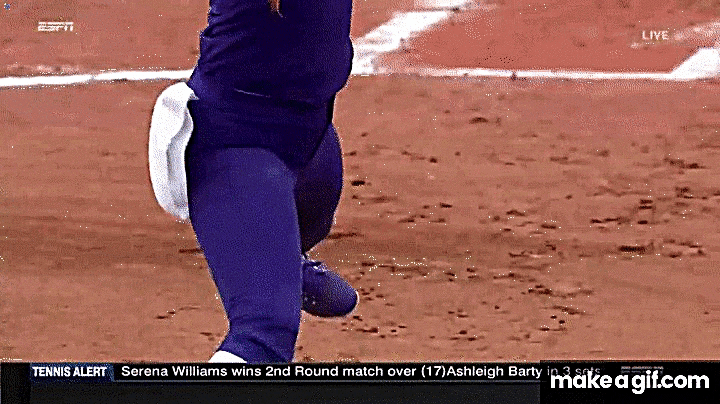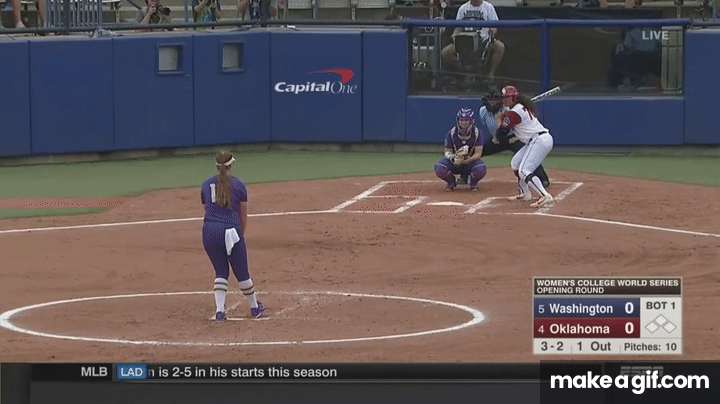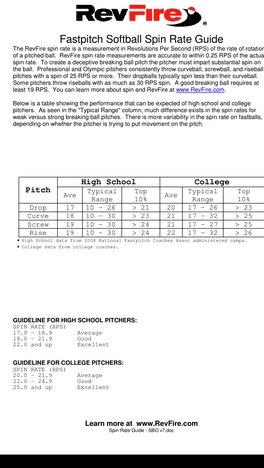shaker1
Softball Junkie
Found what looks to be couple of dropballs this WCWS. What I like about these 2 in particular is that the spin is visible, so the number of revs can be seen between the release and mitt. From whats being discussed in other threads, spin axis and revs are 2 contributing factors when it comes to the effectiveness of the drop. Anywhere from 20 to 30 rps seem to be the goal of a high level pitcher. I've been trying to figure the rps out with info provided, distance, 39' hand to glove(close guess), mph, revs. Maybe this can get someone close to a figure on rps? The Washington pitcher was clocked at 65 on this pitch, Oregon girl is usually in that range. With those figures, I get both of these pitchers under the 20rps mark, around 18. Thoughts? Any known dropball pitchers in this WCWS who would have much higher rates?




Last edited:





